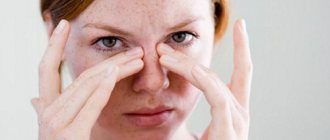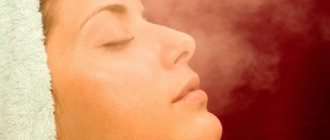Among bathhouse lovers there are those who visit the steam room at least once a week. Is it necessary to interrupt the tradition if a fresh tattoo appears on the body? Can steam speed up healing and destroy all potentially dangerous microbes, and make colors bright and rich? Don't believe old myths. Read the article and take into account the advice of experienced artists from the Art Of Pain studio.
Is it possible to take a steam bath with a tattoo?
It is possible if at least 30 days have passed since application and the tattoo has completely healed. However, it is not recommended to whip the drawing with a broom and actively rub it with scrubs, as many people like to do after a bath.
If you just came from the salon and your tattoo is completely fresh, then you can’t take a steam bath - no matter how much your friends persuade you, don’t give in and don’t go to the bathhouse.
This ban has been tested by the experience of many generations of tattoo artists and is due to several reasons:
- High temperature affects the pigment, which has not yet had time to “settle” over the past days, and the design may lighten or even float.
- There is a high risk of contracting an infection, especially if this is not your personal bathhouse.
- If you like to dive into an icy plunge pool after a steam room, then the temperature difference can affect the clarity of the healing tattoo.
- Brooms, salt and coffee scrubs, shower gels, washcloths - all these sauna attributes are contraindicated for fresh tattoo work on the body.
It’s better to give up your favorite type of recreation for a few weeks than to be upset later, looking at the blurred contours of the drawing, and save money for correction.
When can you go to the bathhouse after getting a tattoo? After at least 30 days, to know for sure that nothing will happen to the drawing.
Should we believe in the myths about the healing and “manifesting” power of steam? Of course not. To help your skin heal faster, use a cream recommended by your artist to care for it, and to keep the colors bright, keep the design out of direct sunlight.
General contraindications after tattooing
During the healing period of the tattoo area, any contact with hot steam and water is completely prohibited. Prohibitions:
- Do not use hot water when bathing;
- prolonged exposure to the sun is undesirable;
- You should not exert physical influence on the tattoo (rub, scrape, scratch).
It is important to remember that all paints used for painting are affected by the same factors. This:
- hot water, sweat;
- steam and elevated temperature;
- Sun rays;
- salt;
- abrasive materials, broom.
When hovering, the broom scrapes the stratum corneum of the skin from the damaged area. Some paint sticks to the skin. As a result, the drawing loses its richness. The boundaries look blurry.
Going without a bath for a month after getting a tattoo is unthinkable. Hygiene procedures are acceptable already on the day of tattooing. But you should be extremely careful. After three to four hours, you can remove the sterile bandage that the tattoo artist applied. Afterwards you can take a shower. The water should not be hot. Do not use brushes or sponges. Be sure to use an antibacterial detergent. After a shower, the tattoo should be blotted with a sterile napkin.
When can you go to the pool after a tattoo?
Where there is a bathhouse, there is usually a swimming pool. Fitness centers, water parks, tourist centers, spa centers, hotels - they all try to offer guests as many water activities as possible.
Sometimes it is simply impossible to resist the urge to swim. And if this is also an “endless” outdoor pool with a view of the mountains, then you simply cannot resist taking some good shots with a favorable angle of your new tattoo, just after the salon.
Let these shots be on the shore of the pool, and not in the water: with a fresh tattoo, chlorinated water is contraindicated for you at first. You've probably seen how white stains appear on clothes almost before your eyes from bleach. Of course, the concentration in the water of pools and water parks is minimal, but it can be enough to lighten a fresh tattoo. And if you swim in the open air in sunny weather, then the pigments are also affected by ultraviolet light, which is repeatedly reflected from the surface of the water. The result will be unpredictable, but certainly sad.
In addition to the risk of changing the color and contour of the tattoo work, there is also the risk of infection. A swimming pool is essentially a huge bathtub in which hundreds of people bathe. And few of them took a shower before the swim, as required by the rules. Our skin successfully copes with the task of protecting the body from infections, but provided that its covers are not damaged. And the process of applying a tattoo involves microtrauma of the skin. Therefore, in the first days and weeks after the procedure, its protective function is reduced. It is not for nothing that the skin is protected with bandages, film or membranes. You should not subject it to additional stress - it is better to wait for complete healing and swim where you want with peace of mind.
Ablative removal.
During laser resurfacing with an Er:YAG laser (erbium), an area of skin along with the pigment is physically removed (evaporated). This way you can remove tattoos of any color and origin.
Laser resurfacing gives excellent results when the dye is located in the surface layers of the epidermis, which is possible with the high professionalism of the tattoo artist.
However, in most cases, dye granules, especially amateur tattoos, old professional and some traumatic tattoos, often end up deep in the dermal zone. Accordingly, any attempt to remove such a tattoo using the ablative method will most likely lead to the formation of a postoperative scar.
Which tattoos are more permanent?
Any tattoos fade over time, most of all this applies to color drawings, with shadows and realism. Graphic tattoos and old-school style tattoos fade less.
Tattoos in the old school style have thicker contours, they are not characterized by three-dimensional images and regular shapes. Most often these are marine-themed tattoos: sea, mermaid, ship, seagull, compass, anchor, dolphins and so on...
Tattoos have firmly taken root in the modern world; they have become part of a person’s personality.
Contraindications for tattoo removal.
Despite the apparent simplicity of the method, there are many contraindications for tattoo removal:
- Fresh tan (at least 4 weeks must pass after natural tanning or visiting a solarium);
- Photosensitivity (hypersensitivity to sunlight, sun allergy);
- Taking drugs classified as photosensitizers. These are hormonal contraceptives, tetracycline antibiotics, sulfonamides. Their use must be stopped 2-4 weeks before the planned procedure.
- Taking vitamin A and isotretinoin for the previous six months;
- Skin diseases (atopic dermatitis, eczema, psoriasis, lichen ruber, porphyria and others);
- Purulent-inflammatory rashes in the affected area
- Acute infectious diseases (including exacerbation of herpes viral infection);
- Chronic diseases, including diabetes mellitus in the stage of decompensation.
- Mental illnesses;
- Epilepsy;
- Varicose veins and signs of thrombophlebitis in the laser impact area;
- Oncology
- The presence of metal prostheses, implants, “pacemaker” (artificial heart rate driver);
- Tendency to form keloid scars;
- Disturbances in the blood coagulation system
In conclusion, I would like to wish you to consciously approach the issue of tattoos and clearly understand whether you need it or not. Clearly weigh the pros and cons. After all, removing a tattoo is much more time consuming and financially expensive than getting one.
Permanent tattoo care
To maintain the beauty of a tattoo, you need to take care of it constantly:
- Apply sunscreen with SPF 50 when going out into the sun. The cream must be applied after each bath.
- Constantly monitor the condition of the image. If a tattoo quickly changes its appearance, you need to contact the artist who filled it.
- Update the drawing periodically - approximately once every 10-15 years.
Share link:
Stages of healing
Recovery after laser resurfacing can be divided into main stages. At the first stage, the primary process of regeneration of damaged skin begins. There is slight swelling, redness, crusts and peeling. During this period, it is especially important to follow the recommendations described above.
At the second stage , the skin returns to normal; the main rule is not to forget about protection from UV radiation and moisturizing. You can gradually return to wearing light makeup and normal skin care without using aggressive products.
With the onset of the third stage, there is no need for special care shown in the first 2 stages. To speed up the rehabilitation process, you can resort to restorative injection procedures, such as mesotherapy or biorevitalization.
FAQ
When can you sit down after surgery?
Not until the spine is strong enough. If there are no problems, you can sit 4 weeks after the hernia surgery.
Are there relapses during the rehabilitation period?
They happen, but proper rehabilitation will reduce the risk of hernia recurrence.
How to eliminate leg pain during rehabilitation?
Leg pain after hernia removal is normal. The reason is the long-term pressure of the hernia on the nerves through which the brain controls the functioning of the legs. During surgery, the pressure is relieved, but it may take several weeks for the nerve tissue to recover. During this time, your lower leg will hurt, your hip will pull, and your limbs will experience numbness. If, while recovering, your leg suddenly begins to hurt sharply and go numb, be sure to tell your doctor. The sooner he determines the cause of the complication, the faster the chances of a speedy recovery, and you will not have to spend several years on treatment.
When can I plan a pregnancy after finishing rehabilitation?
You cannot plan to conceive within a year after removal of the hernia. The fetus will put pressure on the spine, causing a relapse. If you become pregnant, contact your doctor right away.
Is disability granted after completion of rehabilitation?
Rarely, only if the patient’s mobility has not been restored. The decision on disability is made by the ITU commission after a comprehensive examination. The status is assigned for six months, after which it must be confirmed. Your doctor will tell you whether you can get disability.
When is sick leave closed during the rehabilitation period?
If rehabilitation is successful, there are no complications, the doctor closes sick leave after the end of rehabilitation - after 2-3 months. After this, the patient can return to work or change it if it involves difficult working conditions.
Bibliography
- Badalyan L. O. Neuropathology. - M.: Education, 1982. - 317 p.
- Bogolyubov, Medical rehabilitation (manual, in 3 volumes). // Moscow - Perm. - 1998. - 1885 p.
- Popov S. N. Physical rehabilitation. 2005. - 608 p.
- Feshchenko, Ya. V. Non-surgical treatment and prevention of recurrence of intervertebral disc herniations / Ya. V. Feshchenko, L. D. Kravchuk // Pain. Joints. Spine. ─ 2014. ─ No. 3(15). ─ P. 59-61.
Themes
Intervertebral hernia, Spine, Pain, Treatment without surgery Date of publication: 03/26/2021 Date of update: 03/28/2021
Reader rating
Rating: 5 / 5 (1)
Care using a healing film - the second method
For tattoo healing, a special breathable film with hypoallergenic glue is used. It does not need to be changed, the design does not need to be washed or treated with ointment. It does not interfere with daily activities and careful washing. After 5-6 days, the film is removed.
How does a tattoo behave under film:
- On the first day of visiting the salon, the drawing looks the same as it will always look.
- On the 2nd day, the temperature of the skin under the film rises, the bloody fluid mixes with excess pigment particles, forming a dark slurry.
- On the third or fourth day, the liquid evaporates and the skin tightens slightly.
The film is removed on the fifth or sixth day. Before removal, the skin is steamed in a warm bath for 20 minutes. The film is removed slowly and carefully. If it is difficult to remove, then dry it with a hairdryer.
Caring for a tattoo after removing the film is to wash the skin and lubricate it with any moisturizer. You can continue to lubricate the tattoo site with cream until the feeling of dryness goes away.
Price for services
| LASER TATTOO REMOVAL TATTOO REMOVAL WITH Q-SWITCH LASER, MULTILINE, YAG LASER COMPLEX | |||
| № | Name | Duration | price, rub. |
| Tattoo removal | |||
| 1 | up to 5 sq. cm | 5 minutes | 500 |
| 2 | up to 20 sq. cm | 10 min | 1000 |
| 3 | up to 100 sq. cm | 15 minutes | 2000 |
| 4 | up to 200 sq. cm (maximum) | 20 minutes | 3000 |
| Removing permanent makeup | |||
| 5 | eyebrow tip, arrow tip | 5 minutes | 500 |
| 6 | full eyebrows, full arrows | 10 min | 1000 |
| 7 | lip contour | 10 min | 1000 |
When to see a doctor during rehabilitation
Contact your doctor immediately if the following symptoms appear:
- back pain that does not subside and intensifies;
- burning in the area of the damaged disc;
- urinary disturbance;
- pain in the abdomen, arms, legs;
- numbness of hands, feet;
- heat;
- spasm, tension in the back muscles;
- too much swelling in the area of the diseased disc;
- ichor that oozes from the stitches.
These symptoms indicate complications that may result from infection in the wound, purulent inflammation, the onset of pathological narrowing (stenosis) of the spinal canal, when bone/cartilaginous structures affect the nerve roots, and other complications, including recurrence of intervertebral hernia.
Goals and objectives of rehabilitation
Severe back pain occurs when a hernia occurs when the cartilage disc connecting the vertebrae is destroyed. A nucleus emerges from it, which compresses the nerves going from the brain to different parts of the body. Because of the pain, a person cannot raise his arm, bend over, or turn his neck. Sometimes it is so strong that conventional hernia treatment does not help and surgery is needed.
There are 2 types of surgery to remove a herniated disc:
- Open surgery (discectomy, laminectomy)
- the surgeon removes osteophytes, body parts, vertebral arches and other formations that caused pinching. To reduce pressure on nerve fibers, it strengthens adjacent vertebrae with special inserts. Open operations are complex and are used only in extreme cases. Recovery takes several months. - Minimally invasive interventions
- the doctor eliminates the hernia through a small incision using endoscopic equipment or nucleoplasty. The patient recovers after a few days.
After discectomy, pain caused by pinching of the spinal cord and its roots disappears quickly. The causes that caused problems with movement and bending are also eliminated.
But surgery is not the final stage of hernia treatment. Ahead of the patient lies rehabilitation, the goal of which is to speed up healing and restore the functions of the spine.
The doctor develops actions, the sequential implementation of which helps to solve the following problems:
- prevent relapses;
- reduce the risk of complications that appear after operations (thrombosis, keloid scars);
- restore normal muscle function;
- eliminate problems associated with gait and posture;
- develop the habit of correctly distributing the load on your back.
Important point!
It is impossible to determine the exact number of tattoo removal sessions!
When a laser beam is applied to a tattoo, it instantly brightens (especially during the first sessions), due to the destruction of the upper pigmented layer, and then the color returns and can become even brighter, due to the rise of the underlying pigment, and only after about 2 months from the procedure can you see the final Effect. Why? - you ask. Read the answer below.
“washing out” of the pigment destroyed into small particles occurs within one and a half to two months. And if you think that the more often you walk, the faster you will get rid of it, then this is not so. If you repeat the procedure earlier, the “non-blurred” pigment residues prevent the removal of the deeper pigment and the effectiveness of the procedure is insignificant. The maximum effect after the removal procedure appears gradually, over a period of one and a half to two months!
First time effect. The greatest effect of the procedure is visible after the first removal. Since the brightest, pigment-rich layer is destroyed. Subsequent times will not bring you such an enthusiastic result.
Terms of rehabilitation
A rehabilitation program is drawn up immediately after the completion of surgery. Patients should take their first steps within 1-2 days. The rehabilitation period is from 4 months. It depends on:
- Type of operation. After a minimally invasive intervention, rehabilitation will take a month, while after a discectomy it will take at least six months.
- Patient's age. Rehabilitation for older people takes longer.
- Health. Rehabilitation will be delayed if there is a history of chronic diseases (diabetes mellitus).
- Weights. Obese people take longer to recover.
- The nature of the vertebral hernia. This is its size, how long ago the disease was, what difficulties it caused.
Factors influencing the effectiveness of tattoo removal:
- The ink used to make the tattoo or make-up is very difficult to remove; the so-called “burnt” and pigments that are made on the basis of metal oxides. Most modern tattoo inks are easily removed. Tattoo ink and tattoos made with regular ink are best removed.
- Drawings that were applied to the skin decades ago are easier to remove than modern ones applied in recent years.
- The depth to which the paint was driven in. The laser beam affects only the upper part of the pigment. Only after removing the top, rather thin layer of paint, can the beam affect the “next layer”. The deeper and more paint was driven in, the more procedures will be needed to remove it.
- The color of the ink has a huge impact on the effectiveness of tattoo removal. The darker the paint, the easier it is to remove. Therefore, black tattoos are most preferable for laser removal. The lighter the paint, the more difficult it is to remove. Paint that is close in color to flesh-colored, beige, green and yellow is almost impossible to remove with a laser.
- Patient's skin color. If the skin is dark, then part of the beam energy is absorbed by the dark pigment of the skin, which makes the procedure less effective.
- The easiest way to remove tattoos is in the chest area, on the arms and legs, and buttocks, and on white skin they disappear the fastest.
- On the fingers, as well as in other places where the amount of fatty tissue is minimal, laser tattoo removal takes longer. Scarring in the tattoo area (a consequence of getting a tattoo or previous laser removal) slows down the removal of pigment, and sometimes makes it almost impossible
- Modern complex designs require lengthy removal. The reason for this is the intricacy of the design and the durability of the ink.
After complete removal of the black pigment, brown pigmentation remains, which resolves over a long period of time (about 12 months), in persons with a tendency to hyperpigmentation it takes longer.
What happens if you don't undergo rehabilitation?
If you ignore the rehabilitation period, the tissues will not heal properly, which will reduce the effectiveness of the hernia surgery. Muscles and ligaments will remain undeveloped, which will have a bad effect on flexibility and the ability to withstand stress. The result is a recurrence of the vertebral hernia, the return of discomfort.
Each type of intervertebral hernia has serious complications, so you should not delay treatment.
See how easy it is to get rid of a hernia in 10 sessions
Permanent makeup and the subtleties of its removal.
We have been familiar with the problem of tattoo removal for a long time. But the removal of permanent makeup has relatively recently entered our lives on such a large scale. This is due to the development of the beauty industry and the desire of the fair half of humanity to simplify their lives by excluding such a thing as classic makeup from their morning exercise. But the permanent does not always bring the long-awaited result, and the reflection in the mirror is not at all pleasing in the morning. This is where the question arises - how to get rid of this quickly? The answer is simple - using the same laser systems.
The nuances of permanent makeup removal:
- Often warm shades of permanent hair become darker after laser exposure.
- Laser tattoo removal in one session is possible only in the eyelid area, since the depth of the pigment in this area is the uppermost layers of the epidermis, and the amount of dye is insignificant.
- Removing eyebrow tattoos with a laser is a longer and more labor-intensive process, as is a similar procedure on the lips. This is explained by the depth of the pigment and the use of warm tones, as well as repeated corrections in order to obtain a more saturated color.
- After removing permanent makeup, you can use it again after a few months.
- If unnecessary areas are camouflaged with flesh tones, it will no longer be possible to use a laser in the future. All skin tones (especially white) contain titanium oxide. The laser beam simply does not see it!
- Laser eyebrow tattoo removal is a painful procedure that inevitably leads to discoloration of the hairs. But eyebrow growth is stimulated - a nice bonus when removing eyebrow tattoos. Eyebrow color is restored along with the growth of new hairs.
- The swelling in the eyelids goes away on about the third day.
- The use of decorative cosmetics is permitted when the skin is completely healed.
A little history
Tattoos appeared in Russia much later than in Europe.
At the beginning of the twentieth century, Russian sailors became acquainted with the art of tattooing, adopting the fashion from foreign sailors. Tattoos entered the everyday life of Russian people en masse with the advent of crime. Tattoos have become part of recognition in prisons and places of detention.
During the Soviet era, tattoos were common in the army, navy, and criminal structures. Often expressed a person’s attitude to politics, the meaning of life, and to people of the opposite sex.
Some religious denominations prohibit tattoos. Islam, Judaism and even Christianity are against drawings and patterns on the body; Muslims consider tattoos to be a sin.











